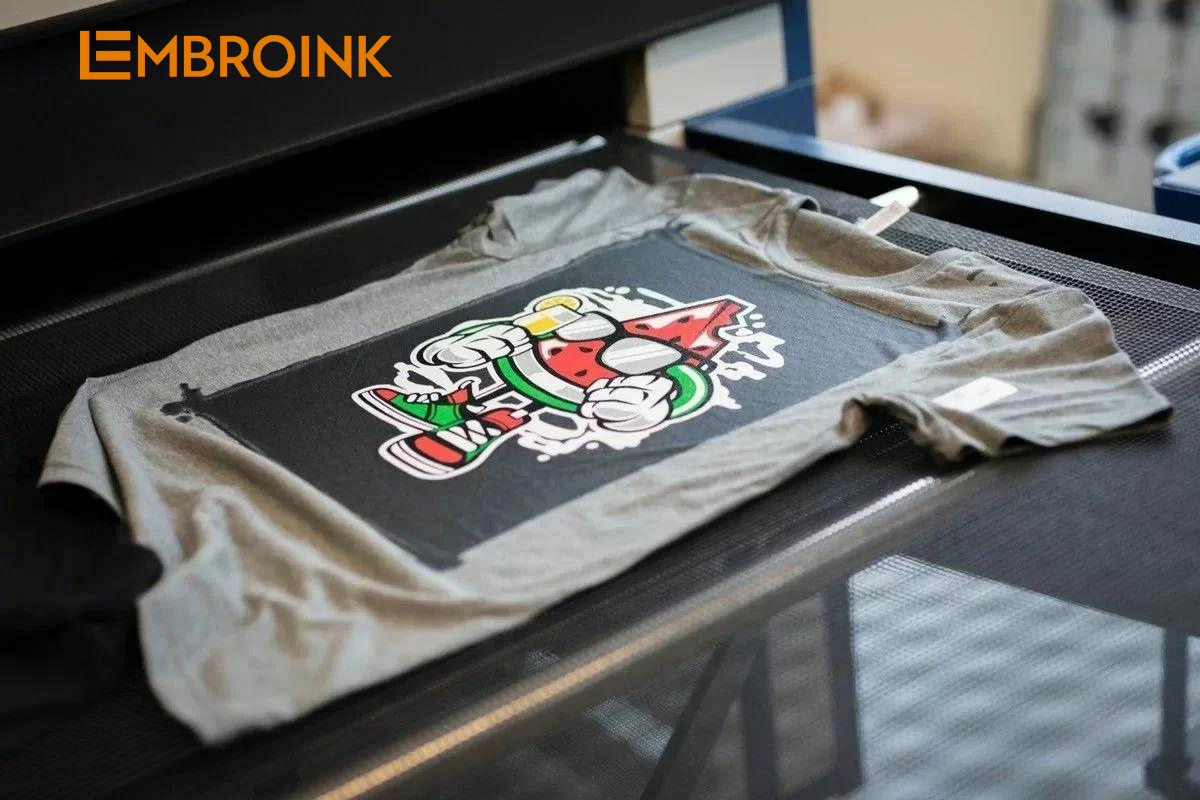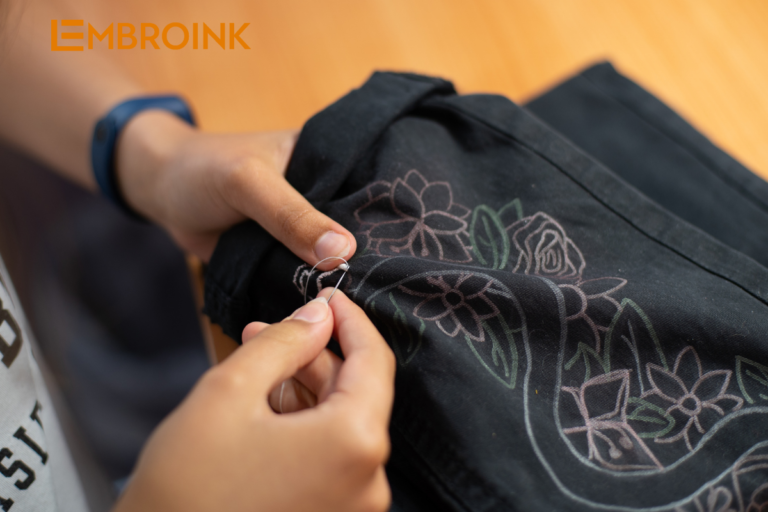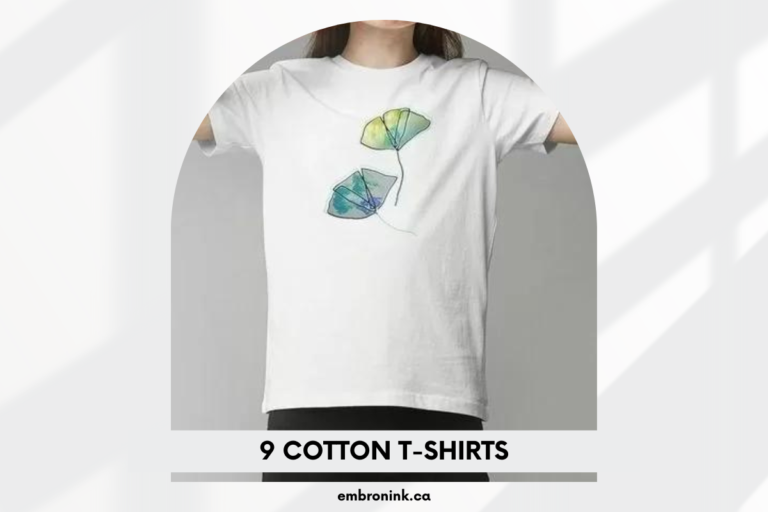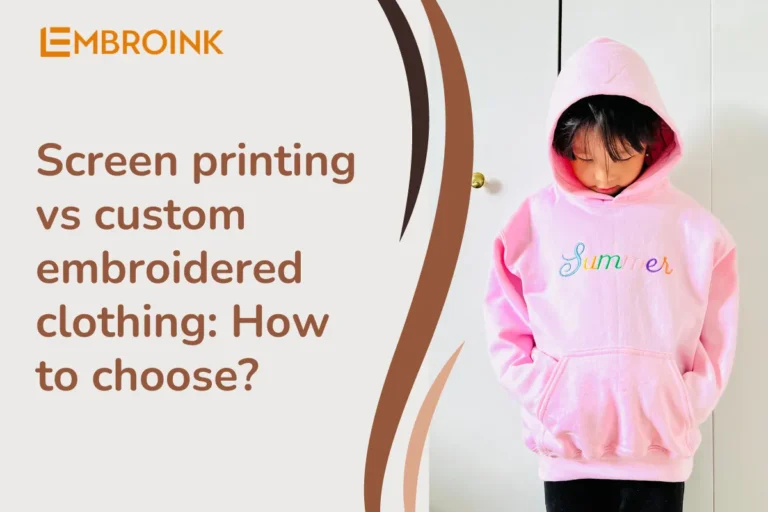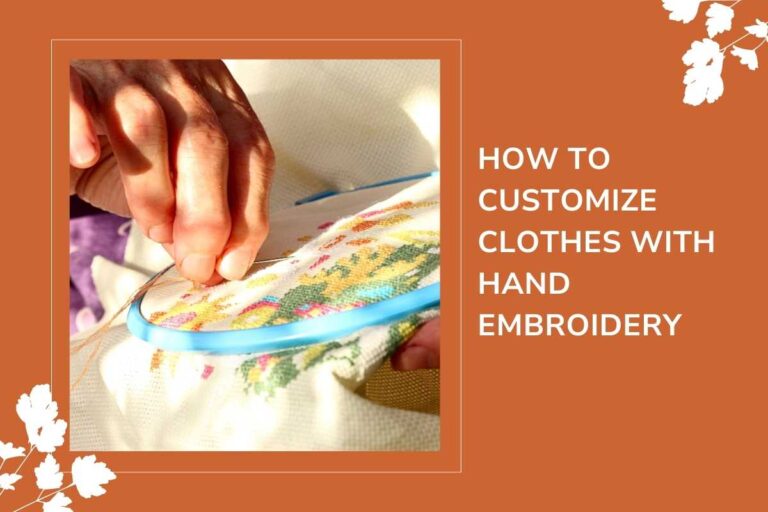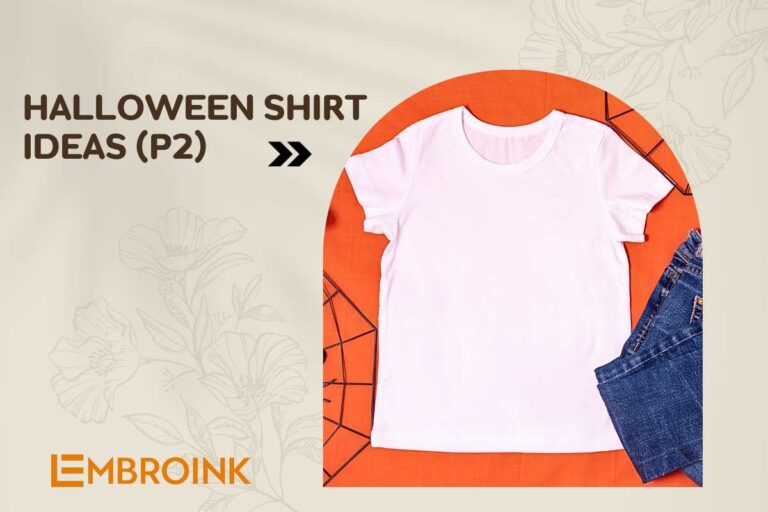What is the best method for printing T-Shirts?
Choosing the best method for printing t-shirts is crucial when starting a t-shirt business, but unfortunately, there isn’t a one-size-fits-all answer. The ideal printing technique will vary based on several factors, including the type of fabric, the volume of t-shirts you plan to produce, and the designs you envision. Additionally, your budget and time constraints will play a significant role.
Consider whether you want to invest in printing equipment for in-house production or if you’d prefer outsourcing to a print-on-demand service. With the dropshipping model, some providers can even handle shipping orders directly to your customers under your brand.
In this post, EmbroInk will review the most popular t-shirt printing methods, highlighting their advantages and disadvantages to help you make an informed decision.
DTG Printing
DTG, or direct-to-garment printing, is a popular t-shirt printing method that has gained traction recently, though it’s relatively new compared to other techniques we’ll discuss.
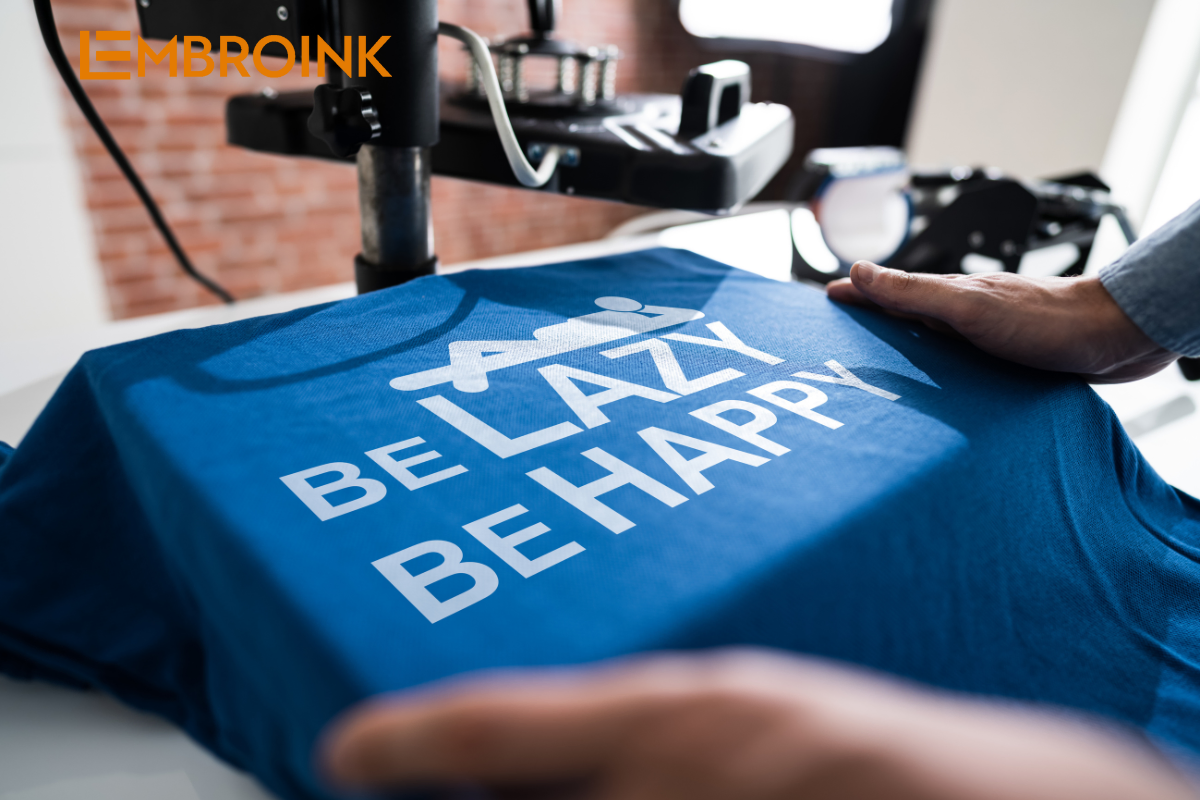
How does DTG Work?
DTG printing works similarly to how ink is applied to paper, but on fabric. The process involves spraying ink directly onto the t-shirt to create the design. This method is ideal for small businesses or individuals who want to create custom t-shirts or apparel on a smaller scale, as it allows for printing individual items and testing various designs without needing a large inventory. Plus, DTG printing delivers high-quality results.
DTG Printing machines
To use DTG printing, you’ll need a specialized printer that uses water-based inks designed to bond with fabric, preferably cotton. The machine applies the ink directly to the fabric, and the t-shirt is ready within minutes.
DTG printers can be expensive, so if you’re considering buying one, be prepared for a significant initial investment. Alternatively, you can use a print-on-demand service like EmbroInk, which offers advanced equipment and handles printing, packing, and shipping on your behalf. Simply connect your online store to EmbroInk, and they’ll fulfill orders automatically.
Fabric compatibility
DTG printing works best on 100% cotton t-shirts and is also effective on cotton blends. It’s not recommended for synthetic fabrics. Because the ink is thin, achieving vibrant prints on dark fabrics can be challenging, so a white underbase is often used to preserve the design’s colors. Pre-treatment and post-treatment are necessary, and special care instructions are required to ensure durability.
Pros
- No setup preparation needed (e.g., films or meshes)
- Suitable for one-off prints
- Ideal for small businesses
- More sustainable than screen printing due to reduced overproduction
- Long-lasting prints
- High-quality, precise results for detailed designs
- Soft feel
- No color limitations
Cons
- Expensive machinery that requires skill to operate
- Requires pre-treatment and post-treatment
- Not cost-effective for large orders with identical designs
- Less effective on non-cotton fabrics
DTF Printing (Direct-to-Film Printing)
DTF, or direct-to-film printing, is a versatile t-shirt printing method that stands out for its adaptability across various fabric types. Unlike other methods, DTF involves using a film to transfer the design onto the t-shirt.
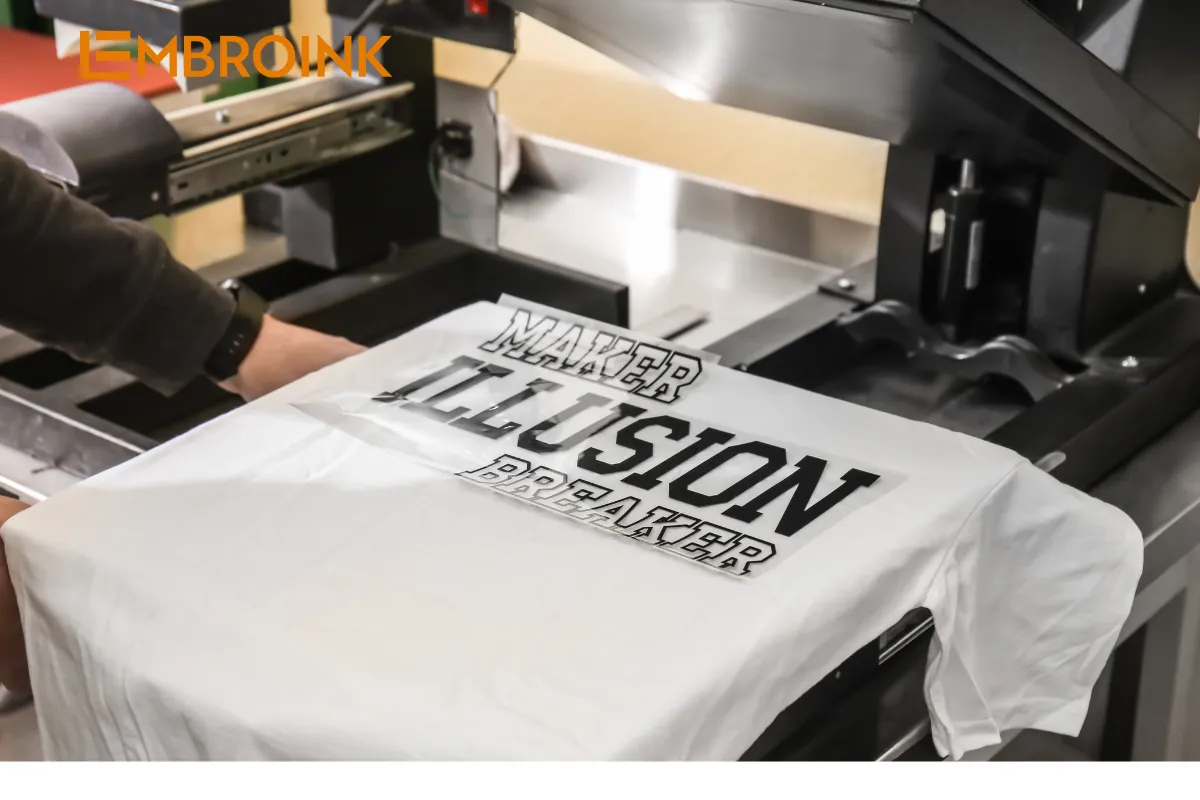
How does DTF work?
In DTF printing, the design is first printed onto a special PET film using water-based inks and a transfer powder. The film is then applied to the t-shirt using a heat press machine, which helps the design adhere to the fabric as the film peels away.
Before printing, the fabric must be dehumidified and pre-flattened. After the design is transferred at around 165°C, the film is cold peeled. The fabric undergoes a second flattening to ensure the design’s durability.
DTF machines
To use the DTF method, you’ll need not only a heat press machine but also materials like PET film and transfer powder. Pre- and post-treatment processes are essential for achieving high-quality, long-lasting prints.
Fabric Compatibility
DTF printing is highly versatile and can be used on a wide range of fabrics, including cotton, polyester, fleece, nylon, and blended materials.
Pros
- Produces high-quality prints with intricate details
- Accommodates a wide range of colors and shades without needing separate layers for different elements
- Compatible with various fabric types
- One film can be used for multiple t-shirts
Cons
- Involves more steps and a slower process
- Higher costs for machines and materials (PET film and transfer powder)
- Less eco-friendly due to increased waste from films
- Produces thicker prints compared to DTG
DTF printing is ideal for elaborate designs with a broad color spectrum and is well-suited for producing multiple t-shirts with the same design.
Screen Printing (Silkscreen Printing)
Screen printing, or silkscreen printing, is one of the oldest and most efficient t-shirt printing methods. It is known for producing vibrant, durable designs at a cost-effective rate.
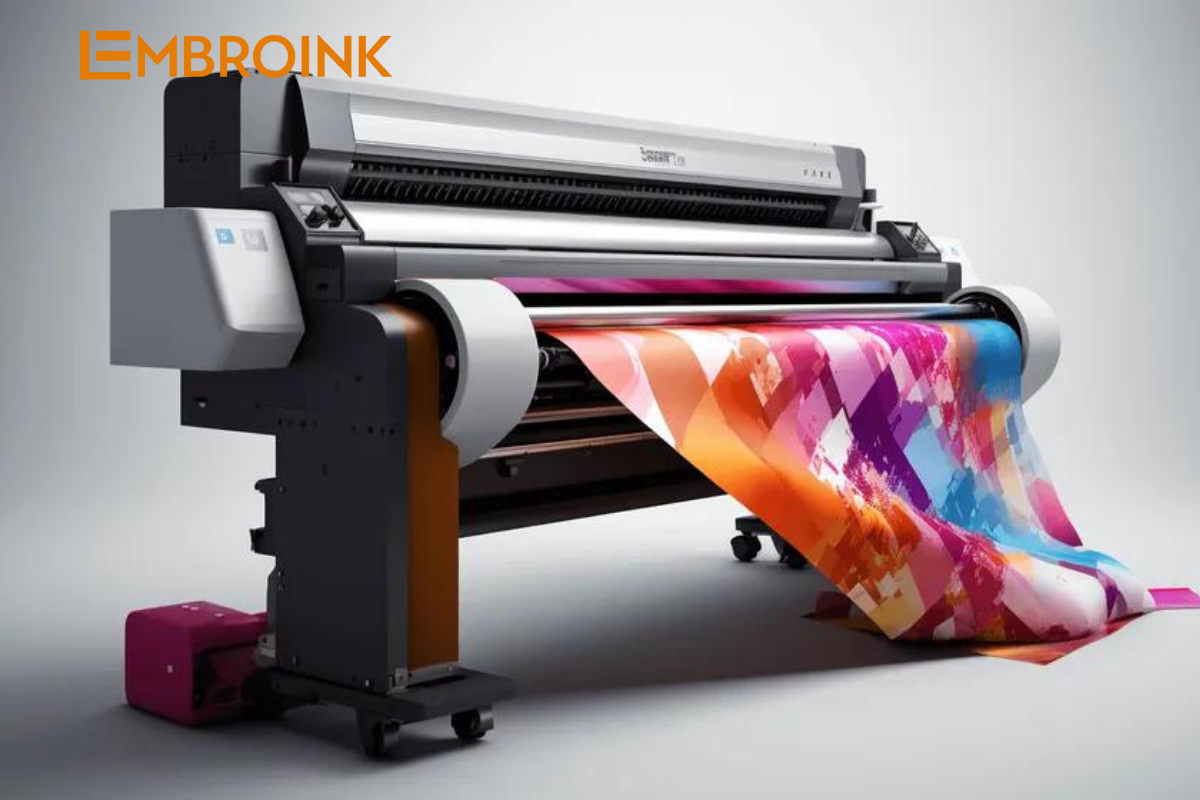
How does Screen Printing work?
Screen printing involves using a stencil (or screen), a mesh screen, and a squeegee or straight blade to transfer the design onto the t-shirt.
- Stencil Creation: A stencil of the design is made and placed on a mesh screen. Areas not meant to receive ink are blocked out to ensure that ink only passes through the open spaces.
- Ink Application: Ink is poured over the stencil and pressed through the mesh using the squeegee or blade, transferring the design onto the fabric.
- Drying: Excess ink is removed, and the t-shirt is set aside to dry.
Screen Printing machines
While screen printing can be done manually, automated machines are available to streamline the process and scale production. For smaller operations, you’ll need:
- A computer with design software
- An inkjet printer for creating the film positive (stencil)
- Screens with fine mesh stretched over frames (number depends on the design complexity)
- A screen drying cabinet or a clean room with appropriate lighting
Fabric compatibility
Screen printing works best on natural fabrics like cotton, silk, and wool. It can also be used on natural and synthetic blends, but 100% synthetic fabrics like polyester and spandex are less suitable.
Pros
- Produces high-quality, long-lasting prints
- Cost-effective for large orders
- Suitable for a variety of fabrics
- Efficient for printing large quantities of the same design (typically 25 pieces or more)
Cons
- Time-consuming process, not ideal for on-demand printing
- Not suitable for highly detailed designs
- Limited color options
- Expensive for small quantities or designs with many colors
- Less eco-friendly due to water use and non-biodegradable plastisol inks
Screen printing is ideal for one-color designs and is best suited for businesses with higher production volumes. For smaller batches or intricate designs, DTG printing might be a more appropriate choice.
Sublimation Printing (Dye Sublimation)
Sublimation printing, also known as dye sublimation or digital sublimation, involves a unique process where a dye transitions from a solid to a gas under heat and pressure. This method is named for its original belief that the dye turned into a gas, though it’s now understood that some liquefaction occurs. Sublimation has become a popular choice for vibrant and durable garment prints, especially for all-over designs.
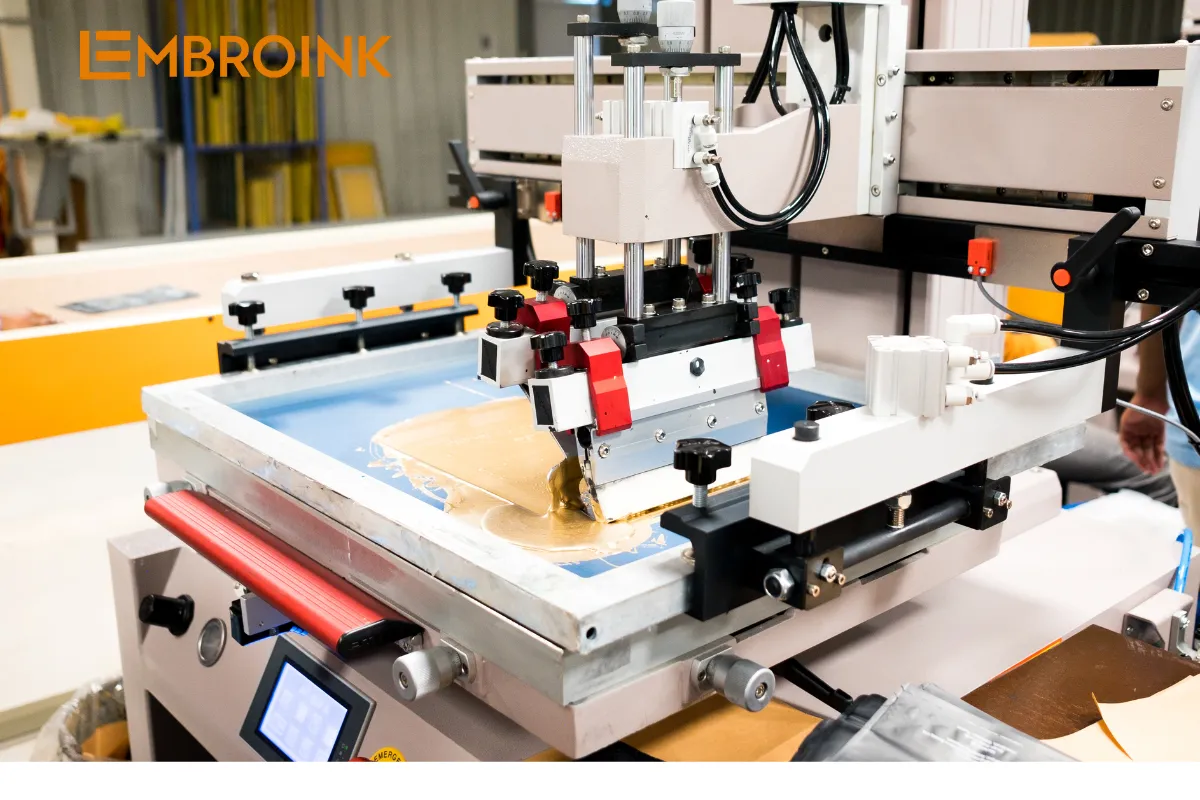
How does sublimation printing work?
The process is straightforward:
- Design Printing: The design is first printed onto special heat transfer paper using sublimation ink.
- Heat Transfer: The printed paper is then applied to the t-shirt, and heat is used to transfer the dye from the paper to the fabric. The dye penetrates the fabric, changing both the color and texture of the material.
Sublimation machines
To produce sublimated t-shirts, you’ll need a sublimation printer or heat press machine, along with the appropriate transfer paper and ink. With older printers, it’s essential to ensure the fabric and paper are aligned to avoid wrinkles, though this is less of an issue with newer models.
Fabric compatibility
Sublimation printing works best on synthetic fabrics like polyester. It is not suitable for cotton t-shirts, as the process requires the dye to bond with synthetic fibers.
Pros
- Produces vibrant, colorful designs
- Prints are durable and withstand multiple washes
- Results in smooth texture and vivid colors
Cons
- Involves more steps and a slower process
- Requires extensive preparation, which can increase overall costs
- Demands advanced knowledge of the process
Sublimation printing is ideal for creating all-over print t-shirts and is well-suited for on-demand production. However, due to the need to print designs onto transfer paper for each new shirt, it may not be the most cost-effective option for large bulk orders.
Other T-Shirt Printing methods
After exploring the major t-shirt printing techniques, let’s dive into some alternative methods that might be just what you’re looking for.
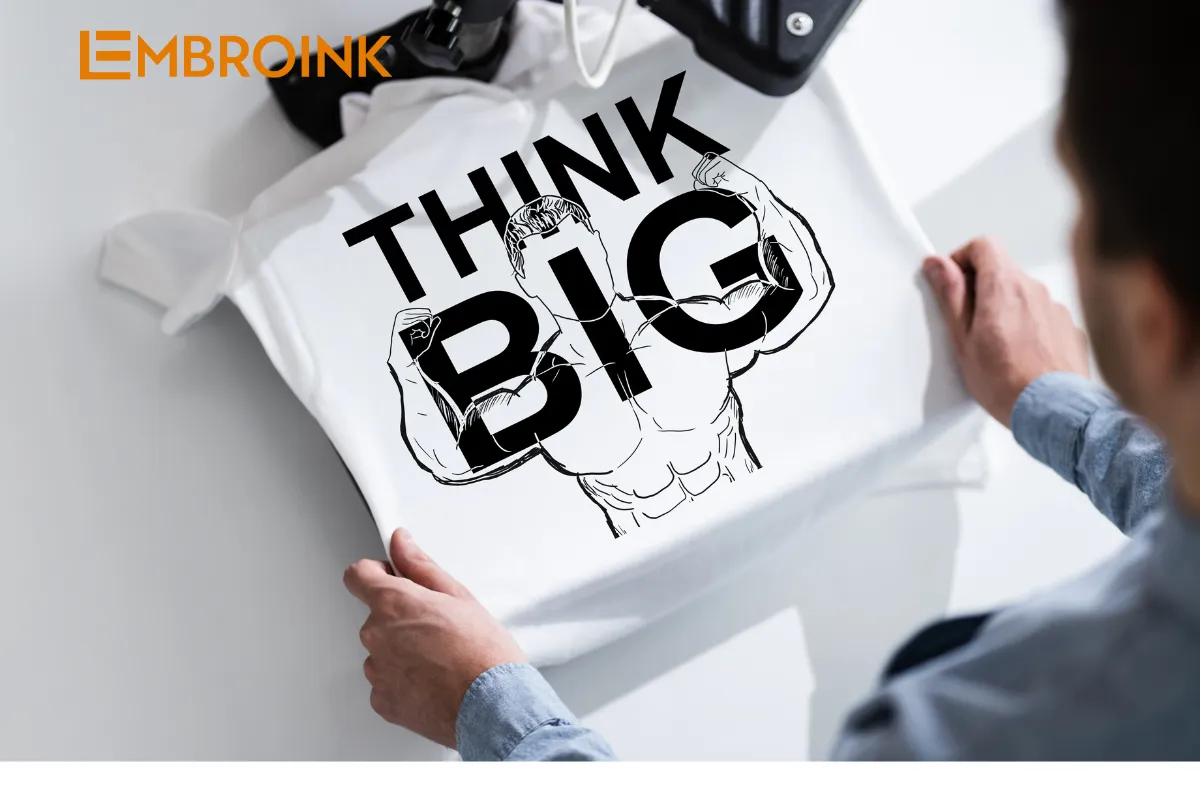
Plastisol Transfers
Plastisol transfers are a variation of screen printing that involves an additional step: transferring the design onto special paper before applying it to the garment.
How do Plastisol Transfers work?
The process starts like traditional screen printing, using a stencil and mesh screen. However, instead of printing directly onto the t-shirt, the design is first printed onto plastisol transfer paper. This paper is then used with a heat press to transfer the design onto the garment.
Pros
- Effective for tougher fabrics like fleece
- Durable prints comparable to screen printing
- Ideal for live printing or events where designs are created on-the-spot
Cons
- Adds an extra step to the printing process
- Requires careful handling to avoid mistakes
- Less suitable for large orders due to additional steps and materials
Heat Press Printing
Heat press printing is a cost-effective method for beginners. It requires a standard inkjet printer, special transfer papers, and a relatively inexpensive heat press machine.
How does Heat Press Printing work?
Similar to dye sublimation, heat press printing involves printing the design onto transfer paper, which is then applied to the fabric using heat and pressure. Unlike sublimation, the design adheres to the surface of the fabric rather than becoming part of it.
Pros
- One of the least expensive printing methods
- Simple and straightforward process
- Good for small batches and complex designs
Cons
- Not suitable for heat-sensitive fabrics
- May produce lower-quality results on darker fabrics
These alternative methods offer different advantages depending on your needs and resources. Whether you’re looking for a cost-effective start or a solution for specific fabric types, exploring these options can help you find the best fit for your t-shirt printing projects.
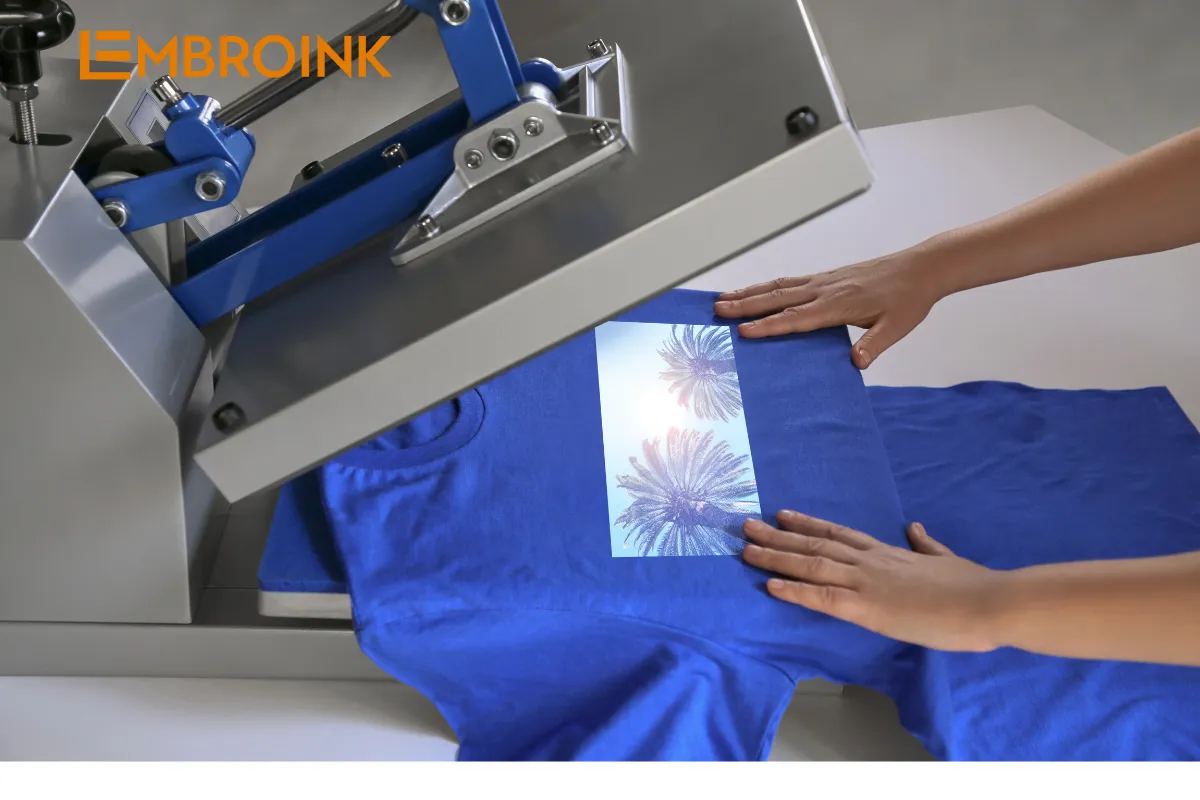
Vinyl Cutting (Vinyl Printing)
Vinyl cutting, also known as vinyl printing, is a versatile technique that combines elements of heat press printing and offers options for both small and large print runs.
How does Vinyl cutting work?
- Design creation: A design is created using computer-aided design (CAD) software and then cut from a vinyl sheet using a vinyl cutter.
- Heat transfer: The cut vinyl design is transferred to the t-shirt using a heat press machine. Vinyl comes in a variety of colors, resulting in vibrant, high-quality prints.
Pros
- Durable and high-quality results
- Suitable for both small and large quantities
Cons
- Requires additional equipment (vinyl cutter)
- Not ideal for large prints due to the rigidity of the vinyl
Discharge Printing
Discharge printing is a unique method that removes dye from the fabric rather than adding it, creating a distinctive, vintage look.
How Does Discharge Printing Work?
- Fabric Preparation: Discharge printing works best on natural fabrics like cotton. The base color of the fabric affects the results, as some colors bleach better than others.
- Application: A screen-printed design is applied to the t-shirt with ink mixed with a special discharge agent that removes the original dye and replaces it with the new color.
Pros
- Produces soft-to-touch prints with vibrant colors
- Suitable for both complex and simple designs
- Creates a unique retro effect
Cons
- Only works with natural fabrics
- Inconsistent results—color may vary from print to print
Belt Printing
Belt printing is a technique that allows for all-over prints, including the collar and sleeves, resulting in a seamless design.
How Does Belt Printing Work?
- Design Application: The design is applied to a roll of fabric using a belt printing machine, which functions similarly to screen printing. Typically, it involves one-color designs to maintain fabric softness.
- Fabric Cutting: After printing, the fabric roll is cut into t-shirt shapes.
Pros
- Enables seamless all-over prints
Cons
- Requires expensive equipment
- Limited color options due to the nature of the process
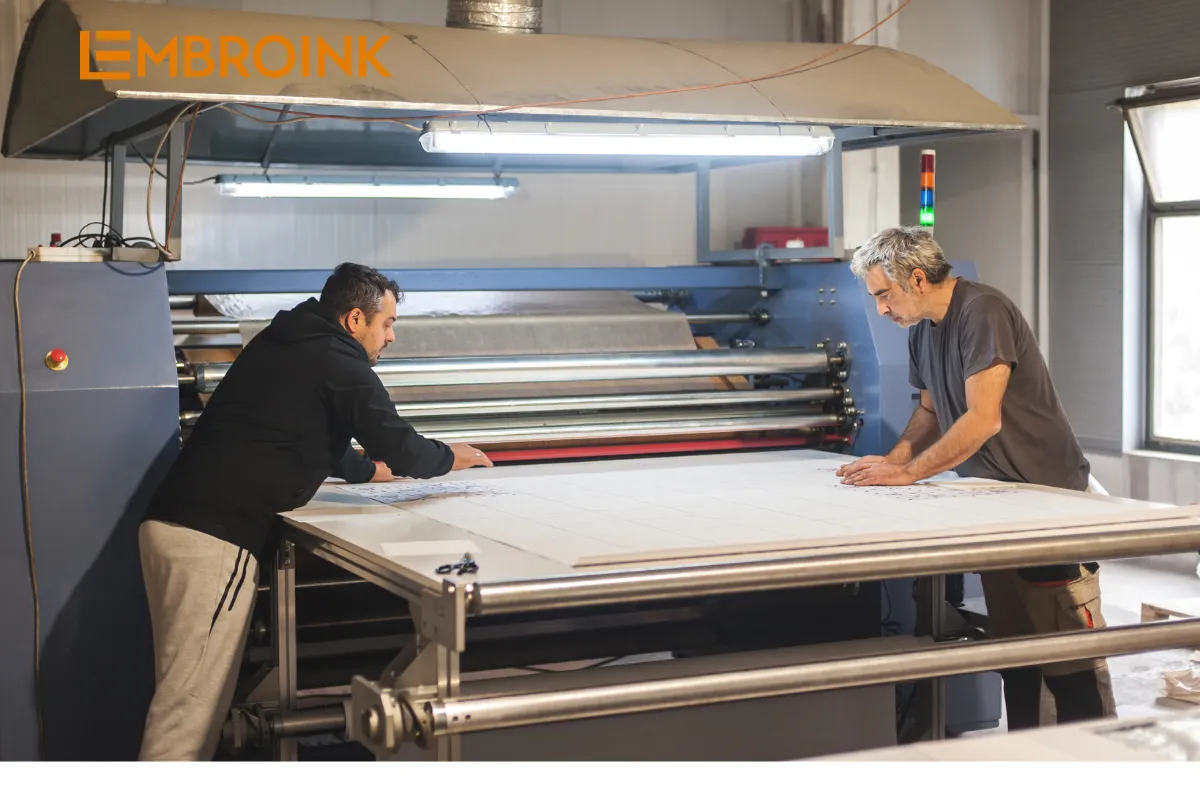
Old-School Printing Methods
If you’re interested in traditional and hands-on approaches to t-shirt customization, there are several classic techniques that allow for personal, homemade designs.
Resist Dyeing
Resist dyeing is the art behind the iconic tie-dye effect. This technique involves preventing dye from reaching certain parts of the fabric to create patterns and textures. In tie-dye, fabric is tied, twisted, or folded before being dipped in dye, resulting in vibrant and intricate designs.
Traditional Techniques:
- Shibori: A Japanese technique involving folding, twisting, or bunching fabric and binding it before dyeing.
- Bandhani: An Indian method where fabric is tightly tied with threads before being dyed.
Materials:
- Manual methods like tying and clamping
- Waxes or chemicals to block dye from specific areas
Airbrushing
Airbrushing is a creative method that produces unique, graffiti-like designs. It requires technical skill but offers a great deal of artistic freedom.
How It Works:
- Tools needed: An airbrush gun, paint, and a stencil are essential.
- Process: The design is created by spraying paint through the airbrush gun, using stencils to guide the design.
Considerations:
- Test runs: It’s advisable to test the technique on a small area or sample fabric as results can vary.
- Durability: Airbrushed prints may not be as durable as other methods, as the paint can wear off over time.
Both resist dyeing and airbrushing are excellent for creating distinctive, personalized t-shirts and are ideal for small-scale, artistic projects.

